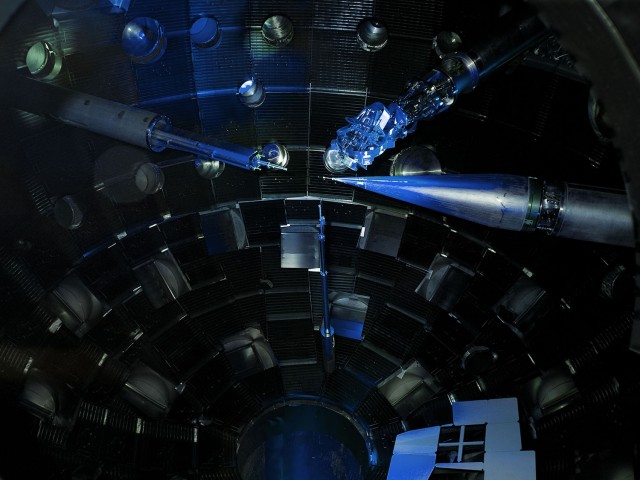Researchers learn about gas-giant cores by hammering diamond with lasers
Ars Technica » Scientific Method 2014-07-24

The discovery of so many exoplanets in recent years has raised many new questions, forcing us to reexamine some of our ideas. Scientists had extrapolated models of stellar system evolution from our own Solar System, assuming that others look very similar to our own. But extrapolation can only get us so far. Scientists never expected to find so many “hot Jupiters”—gas giants larger than Jupiter and orbiting very close to their star.
We’re also having a hard time understanding the inner workings of exoplanets and stars with much greater mass than Earth. Scientists have managed to test some materials under extreme pressures and found that our conventional ideas about a material’s behavior may not apply. Certain exotic quantum mechanical models could apply in such extreme cases, but until recently, scientists have not been able to test those models’ predictions.
The difficulty, of course, is that actually visiting the cores of gas giants to test our understandings is wildly impractical. The next best thing, then, is to recreate these massive pressures on Earth and study their effects on materials. As impossible a task as it may seem, scientists at the National Ignition Facility (NIF) used its enormous lasers to do exactly that.
Read 8 remaining paragraphs | Comments